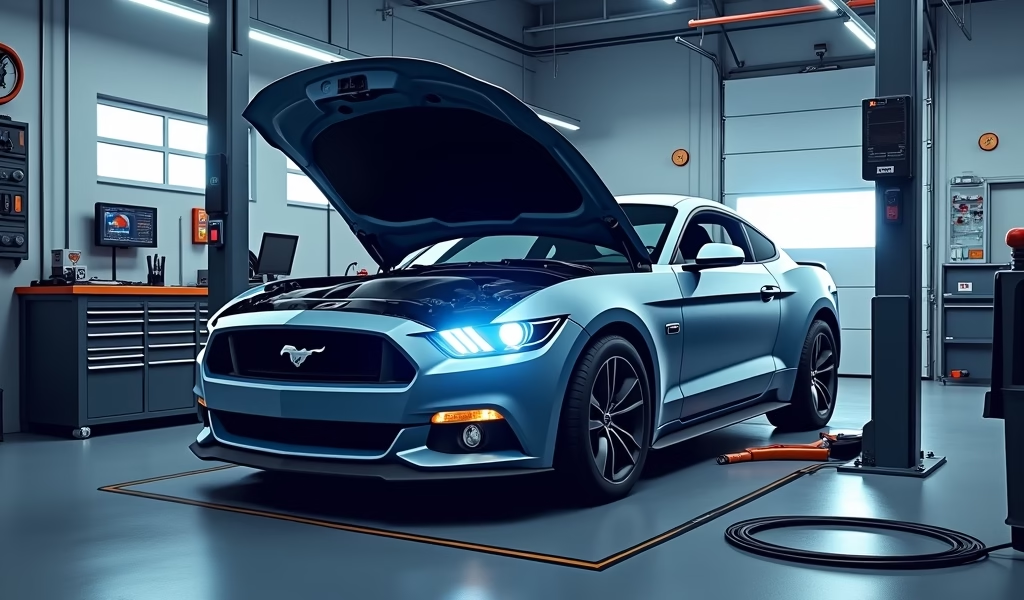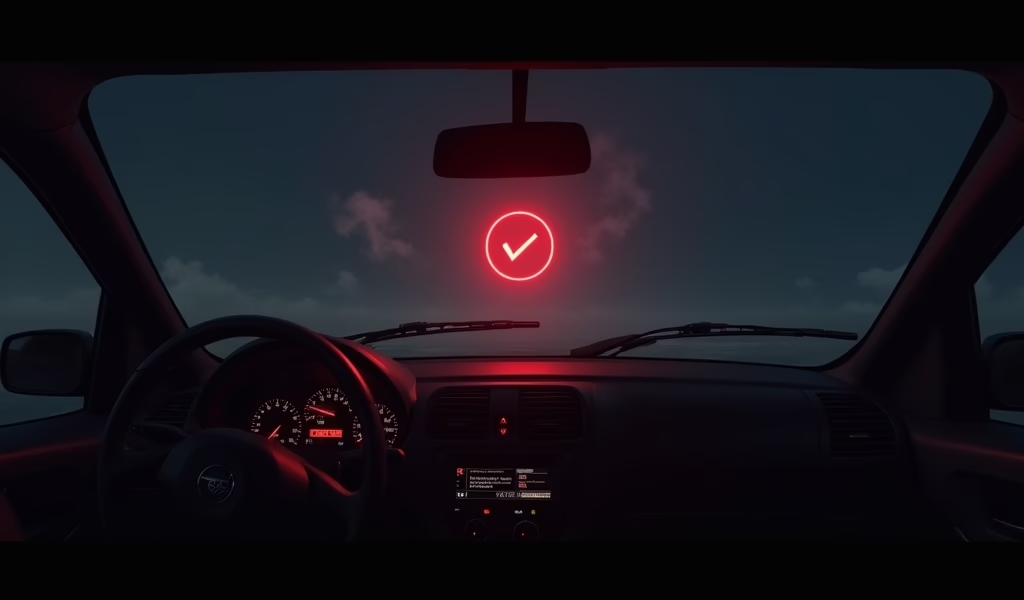Overview
This article details six methods to reset a car’s check engine light: disconnecting the battery, using an OBD-II scanner, completing driving cycles, removing specific fuses, using manufacturer button sequences, and seeking professional help. The guide emphasizes that resetting the light should only be done after fixing the underlying issue, explains when not to reset the light, and outlines what to expect after a reset.
Table of Contents
- Understanding the Check Engine Light
- Reasons for Resetting Your Check Engine Light
- Safety Precautions Before You Start
- 6 Ways to Reset Your Check Engine Light
- Method 1: Disconnecting and Reconnecting the Battery
- Method 2: Using an OBD-II Scanner
- Method 3: Completing a Driving Cycle
- Method 4: Using the Fuse Box Method
- Method 5: Button/Key Cycling Technique
- Method 6: Getting Professional Help
- When You Shouldn’t Reset Your Check Engine Light
- What to Expect After Resetting
- Conclusion
- Frequently Asked Questions
If you’ve been searching for information about how to reset a car’s check engine light, you’ve come to the right place. That ominous amber glow on your dashboard can be concerning, and I understand your frustration. In this comprehensive guide, I’ll walk you through various methods to reset your check engine light safely and effectively, while also explaining when you should (and shouldn’t) attempt this procedure.
Understanding the Check Engine Light
That little engine-shaped light on your dashboard isn’t just there to annoy you—it’s an important communication tool from your vehicle’s onboard diagnostic system. When illuminated, your car is essentially saying, “Hey, something isn’t quite right here.”
Modern vehicles are equipped with dozens of sensors monitoring everything from engine temperature to oxygen levels in the exhaust. When one of these sensors detects an abnormality, it triggers the check engine light and stores a specific trouble code in the car’s computer memory.
These trouble codes (often called DTCs or Diagnostic Trouble Codes) are like secret messages that mechanics can decode to pinpoint the exact issue. They might indicate minor problems like a loose gas cap or more serious concerns like a failing catalytic converter.
It’s worth noting that a steady check engine light usually suggests a non-emergency issue that should be addressed soon, while a flashing light indicates a severe problem that requires immediate attention to prevent damage to your vehicle.
Reasons for Resetting Your Check Engine Light
There are several legitimate reasons why you might want to reset your check engine light:
- You’ve already fixed the underlying issue and want to clear the warning
- You need to determine if an intermittent problem has been resolved
- You’re preparing for an emissions test after completing necessary repairs
- You want to see if the problem recurs, helping to diagnose an elusive issue
- The light was triggered by a temporary anomaly (like driving through a deep puddle)
However, I must emphasize that resetting the light without addressing the underlying problem is like putting a piece of tape over a crack in your windshield—it doesn’t fix anything, and the issue will likely return, potentially worse than before.
The most responsible approach is to diagnose and repair the problem first, then reset the light as the final step in your maintenance process. This ensures your vehicle remains safe, efficient, and environmentally friendly on the road.

Safety Precautions Before You Start
Before attempting to reset your check engine light, let’s cover some important safety measures to protect both you and your vehicle:
- Always work with a cool engine to avoid burns or injuries
- Park on a flat, stable surface with the parking brake engaged
- Wear appropriate safety gear, including gloves if you’ll be working with the battery
- Have your vehicle’s manual handy for specific information about your car’s systems
- Disconnect the negative battery terminal first when working with the battery
- Be aware that resetting the computer will also reset other electronic systems (radio presets, clock, etc.)
Additionally, some vehicles have specific requirements when it comes to electrical work. Certain models, particularly luxury cars and newer vehicles with sophisticated electronics, may require special procedures or tools to avoid damaging sensitive components.
Most importantly, if your check engine light is flashing rather than steadily illuminated, this indicates a severe problem that could damage your catalytic converter or other expensive components. In this case, you should schedule a professional tune-up service immediately rather than attempting to reset the light yourself.
6 Ways to Reset Your Check Engine Light
There are several methods to reset your check engine light, ranging from simple DIY approaches to those requiring specialized equipment. I’ll walk you through each option, starting with the simplest and working toward more advanced techniques.
Remember that the effectiveness of these methods can vary depending on your vehicle’s make, model, and year. Some newer vehicles have more sophisticated systems that may require professional intervention or specific reset procedures.
Let’s explore each method in detail to help you choose the most appropriate one for your situation.
Method 1: Disconnecting and Reconnecting the Battery
This is the most straightforward method and requires no special tools. Here’s how to do it:
- Ensure your vehicle is turned off and the keys are removed
- Open the hood and locate the battery
- Using a wrench, loosen and remove the negative (black) battery terminal first
- Wait approximately 15-20 minutes for the capacitors in the car’s computer to discharge completely
- Reconnect the negative terminal, making sure it’s secure
When you disconnect the battery, your car’s computer essentially goes through a “hard reset,” clearing all stored fault codes. While this method is simple, it’s also somewhat crude and has some drawbacks.
First, you’ll lose all electronic presets like radio stations, seat positions, and clock settings. Second, modern vehicles may require a learning period after a reset, during which fuel efficiency and performance might be temporarily affected. According to Car and Driver’s research, this adjustment period typically lasts for several driving cycles.
It’s worth noting that this method will only clear the code temporarily if the underlying issue hasn’t been resolved—the check engine light will likely return after a few driving cycles.
Method 2: Using an OBD-II Scanner
For a more precise approach, an OBD-II scanner is the tool of choice for both professionals and informed car owners. This method allows you to:
- Read the specific trouble codes before clearing them
- Clear codes without disconnecting the battery
- Avoid losing electronic settings and presets
- Monitor the system to see if codes return
To use an OBD-II scanner:
- Locate your vehicle’s OBD-II port (usually under the dashboard near the steering column)
- With the engine off, plug in the scanner
- Turn the ignition to the “ON” position (don’t start the engine)
- Follow the scanner’s instructions to read any stored codes (write these down for reference)
- Select the “Clear Codes” or “Erase Codes” function
- Turn off the ignition and disconnect the scanner
Basic OBD-II scanners are relatively affordable (starting around $25-50) and can be a worthwhile investment for any car owner. More advanced models offer additional features like live data streaming and enhanced diagnostics.
The Environmental Protection Agency requires all vehicles manufactured after 1996 to have OBD-II compatibility, making this method widely applicable for most cars on the road today.
Method 3: Completing a Driving Cycle
Sometimes, your vehicle’s computer will reset the check engine light on its own after a certain number of successful “driving cycles.” A driving cycle typically involves:
- Starting the engine from cold
- Letting the engine reach normal operating temperature
- Driving at various speeds, including highway and city conditions
- Coming to a complete stop multiple times
The exact pattern for a complete driving cycle varies by manufacturer, but generally, it takes between 50-100 miles of normal driving for the vehicle’s computer to run all its self-tests and clear the light if the problem has been fixed.
This method is completely non-invasive and requires no tools, but it does take patience. If the light remains on after several days of normal driving, the issue likely hasn’t been resolved.
Many mechanics recommend this approach after repairs because it allows the vehicle’s systems to naturally verify that the problem has been corrected, rather than forcing a reset that might mask ongoing issues.

Method 4: Using the Fuse Box Method
Some vehicles allow you to reset the check engine light by removing specific fuses. This method is less common but worth trying if other approaches aren’t available:
- Consult your owner’s manual to locate the fuse box and identify the fuse associated with the engine control unit (ECU) or powertrain control module (PCM)
- With the engine off, remove the identified fuse
- Wait approximately 10-15 minutes
- Reinstall the fuse securely
This method sits somewhere between disconnecting the battery and using an OBD-II scanner in terms of effectiveness and potential side effects. It’s less disruptive than a complete battery disconnect but still may reset certain electronic components.
Be extremely careful when working with your vehicle’s fuses. Removing the wrong fuse could affect critical safety systems or cause other electrical issues. Always refer to your specific vehicle’s manual before attempting this method.
Method 5: Button/Key Cycling Technique
Some vehicles have built-in reset procedures that use the ignition key or dashboard buttons. While these vary widely by manufacturer, a common sequence involves:
- Turn the ignition to the “ON” position (don’t start the engine)
- Press and hold the odometer reset button or trip meter button
- Continue holding while turning the ignition off and then back to “ON”
- Look for the check engine light to blink and then go out
For vehicles with push-button start systems, the procedure may involve pressing certain combinations of dashboard buttons or holding the start button for specific intervals.
This method is manufacturer-specific, so consulting your owner’s manual is essential. The advantage is that it’s designed specifically for your vehicle and typically won’t reset other systems unnecessarily.
Method 6: Getting Professional Help
When all else fails—or for those who prefer to leave technical matters to the experts—professional assistance is always an option:
- Many auto parts stores offer free code reading services
- Professional mechanics have advanced diagnostic equipment
- Dealerships have manufacturer-specific tools and knowledge
Professional diagnostics go beyond simply resetting the light—technicians can perform comprehensive system checks, identify intermittent issues, and provide expert advice on necessary repairs. According to the National Institute for Automotive Service Excellence, certified technicians undergo rigorous training specifically for diagnostic procedures.
If your check engine light repeatedly returns after resetting, professional diagnostics can save you time, money, and frustration in the long run by identifying the root cause rather than just treating the symptom.
When You Shouldn’t Reset Your Check Engine Light
While knowing how to reset your check engine light is useful, there are situations where you should absolutely not reset it:
- When the light is flashing (indicating a severe problem)
- Before diagnosing the underlying issue
- When you notice performance problems (rough idle, power loss, etc.)
- Just before an emissions test (this is often detected as “not ready” and will cause a test failure)
- When you smell fuel, burning, or other unusual odors
Remember that the check engine light is a messenger—killing the messenger doesn’t solve the problem. Continually resetting the light without addressing the underlying issue can lead to more extensive damage and costlier repairs down the road.
Modern vehicles have sophisticated emissions and engine management systems that are designed to protect both the environment and your engine. Ignoring these warning systems can have serious consequences for your vehicle’s longevity and performance.
What to Expect After Resetting
After successfully resetting your check engine light, here’s what you might experience:
- The vehicle’s computer will enter a “learning mode” as it recalibrates
- Fuel efficiency and performance might be slightly affected for 50-100 miles
- Some features like cruise control may be temporarily disabled
- You’ll need to reset electronic preferences like radio stations and clock settings
If the original problem hasn’t been fixed, the check engine light will likely return after a few driving cycles. This is actually helpful diagnostic information—if the light returns quickly, it indicates an ongoing issue that requires attention.
For emissions testing purposes, most vehicles need to complete several “readiness monitors” before they’re considered ready for testing. This typically involves completing specific driving patterns that allow the onboard computer to verify all systems are functioning properly. According to California Air Resources Board guidelines, this process can take anywhere from one day to a week of normal driving.
Conclusion
Learning how to reset a car’s check engine light is a valuable skill for any vehicle owner, but it’s just one part of responsible car maintenance. The most effective approach is to first diagnose and repair the underlying issue, then reset the light as the final step in the process.
From the simple battery disconnect method to using sophisticated OBD-II scanners, you now have multiple tools in your troubleshooting arsenal. Remember that the appropriate method depends on your specific situation, vehicle type, and the nature of the problem triggering the light.
If you’re uncomfortable with any of these procedures or if the check engine light repeatedly returns, don’t hesitate to seek professional assistance. Your vehicle is a complex machine with interconnected systems, and sometimes expert knowledge is the most efficient path forward.
By combining these reset techniques with proper diagnosis and repair, you’ll keep your vehicle running efficiently, extend its lifespan, and avoid the frustration of recurring dashboard warnings.
Frequently Asked Questions
Will disconnecting the battery reset the check engine light?
Yes, disconnecting the battery for 15-20 minutes will reset the check engine light by cutting power to the vehicle’s computer. However, this will also reset other electronic systems like your radio presets and clock.
How long does it take for a check engine light to reset itself?
A check engine light may reset itself after 10-20 successful driving cycles if the original problem has been fixed. This typically takes between 50-100 miles of normal driving.
Can I drive with the check engine light on?
You can usually drive with a steady check engine light, but should have it checked soon. A flashing check engine light indicates a severe problem that requires immediate attention and could damage your vehicle if you continue driving.
Will check engine light reset after tightening gas cap?
If a loose gas cap triggered the light, tightening it properly might cause the light to turn off after a few driving cycles. This common issue typically requires 50-100 miles of driving before the system verifies the problem is resolved.
Can AutoZone or other parts stores reset my check engine light?
Most auto parts stores can read your codes for free but have policies against resetting lights without repairs. They can diagnose the problem but typically recommend addressing the underlying issue before clearing the code.

